.01
Comino 'Blue Lagoon'
The Blue Lagoon is truly exceptional and one of the best beaches in Malta. It is located on the west of Comino between the main island and the islet of Cominotto. The waters gleam on a clear summer’s day like a light blue sapphire reflecting the sky while allowing you to enjoy the pure white sand bottom of this part of the Mediterranean Sea. This long and narrow bay surrounded by rock and a bit of sand is almost like a pool, which makes it the ideal place for swimming, snorkeling, scuba diving or simply relaxing on the beach.
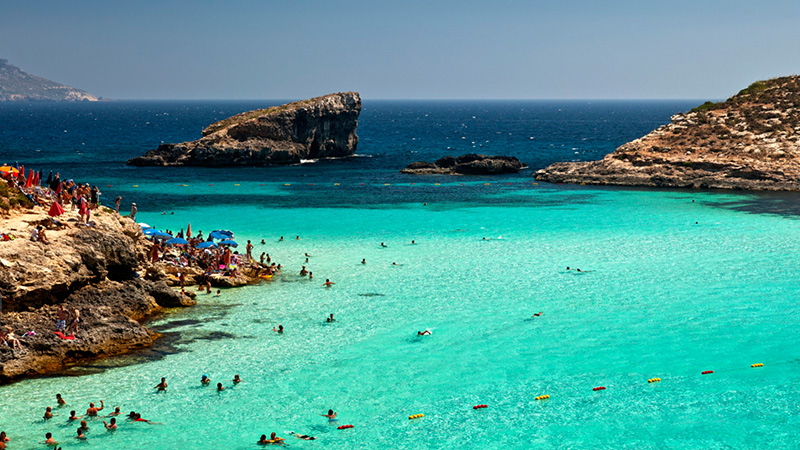
.01
Comino 'Blue Lagoon'
The Blue Lagoon is truly exceptional and one of the best beaches in Malta. It is located on the west of Comino between the main island and the islet of Cominotto. The waters gleam on a clear summer’s day like a light blue sapphire reflecting the sky while allowing you to enjoy the pure white sand bottom of this part of the Mediterranean Sea. This long and narrow bay surrounded by rock and a bit of sand is almost like a pool, which makes it the ideal place for swimming, snorkeling, scuba diving or simply relaxing on the beach.
.02
The Tarxien Temples
The Tarxien Temples, believed to date between 3,600 to 2,500 BC, are amongst the most important evidence of ancient cultures which once inhabited Malta. The temples site, now surrounded by urbanisation, was discovered by a farmer in 1915. In one of the temples a huge statue of a reclining woman was found (the original is now housed in the National Museum of Archaeology in Valletta), which is one of the world’s earliest known representation of a deity. The statue is considered to be that of a fertility goddess. There are four linked temples with massive stone blocks up to 3 metres by 1 metre by 1 metre in size.

.02
The Tarxien Temples
The Tarxien Temples, believed to date between 3,600 to 2,500 BC, are amongst the most important evidence of ancient cultures which once inhabited Malta. The temples site, now surrounded by urbanisation, was discovered by a farmer in 1915. In one of the temples a huge statue of a reclining woman was found (the original is now housed in the National Museum of Archaeology in Valletta), which is one of the world’s earliest known representation of a deity. The statue is considered to be that of a fertility goddess. There are four linked temples with massive stone blocks up to 3 metres by 1 metre by 1 metre in size.
.03
Ġgantija Temples
At more than 5,000 years old, the Ġgantija temples on Gozo are the oldest temples in the Maltese Islands, predating the pyramids of Egypt during the old kingdom and Stonehenge. These remarkably well-preserved temples are located in the outskirts of the beautiful village of Xagħra and consist of two temples dating back between 3,600 and 3,200 years BC. The Ġgantija temples are a UNESCO world Heritage Site.
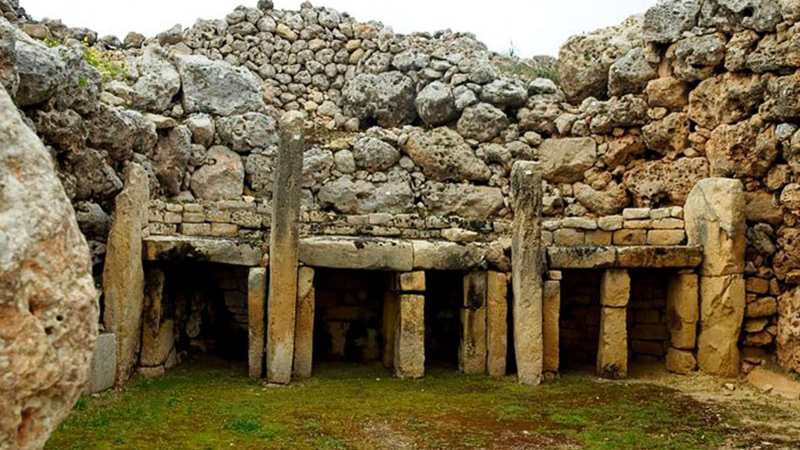
.03
Ġgantija Temples
At more than 5,000 years old, the Ġgantija temples on Gozo are the oldest temples in the Maltese Islands, predating the pyramids of Egypt during the old kingdom and Stonehenge. These remarkably well-preserved temples are located in the outskirts of the beautiful village of Xagħra and consist of two temples dating back between 3,600 and 3,200 years BC. The Ġgantija temples are a UNESCO world Heritage Site.
.04
Blue Grotto
From the typical Mediterranean inlet of Wied Iz-Zurrieq, visitors can catch small fishing boats to the Blue Grotto and the other small caves along the way. The Blue Grotto itself is an enormous arch which covers the inlet to a deep cave system. The water here is so clear that despite the depth, the sea floor appears to be only under a few metres of water. The best time to visit is before mid-morning when the sun shines directly into Grotto. At this time of the day, if you put your hands into the water they will turn florescent blue. The trip also visits several other caves depending on the weather including Honeymoon Cave, Reflection Cave and Cat’s cave. The Blue Grotto is definitely a Top 10 Malta site.
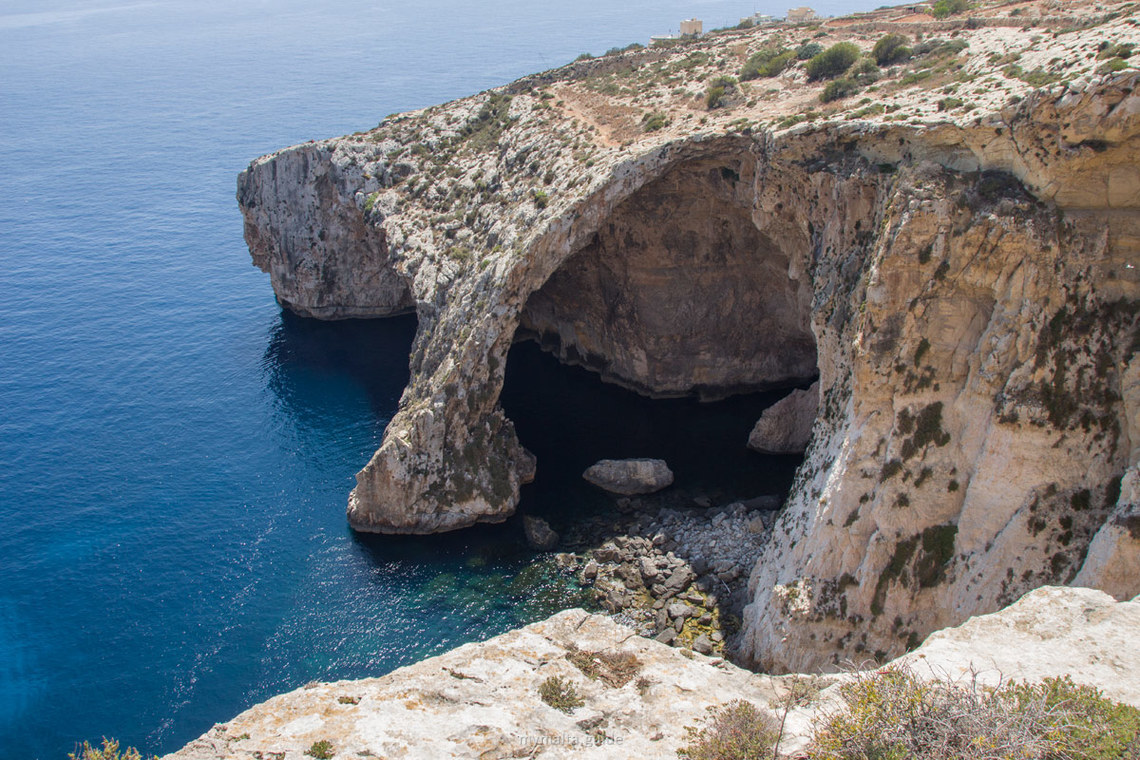
.04
Blue Grotto
From the typical Mediterranean inlet of Wied Iz-Zurrieq, visitors can catch small fishing boats to the Blue Grotto and the other small caves along the way. The Blue Grotto itself is an enormous arch which covers the inlet to a deep cave system. The water here is so clear that despite the depth, the sea floor appears to be only under a few metres of water. The best time to visit is before mid-morning when the sun shines directly into Grotto. At this time of the day, if you put your hands into the water they will turn florescent blue. The trip also visits several other caves depending on the weather including Honeymoon Cave, Reflection Cave and Cat’s cave. The Blue Grotto is definitely a Top 10 Malta site.
.05
St. John's Co-Cathedral
St. John’s Co-Cathedral is unparalleled in its historic significance to Malta. Apart from its place among the most magnificent baroque churches in the world, St. John’s Co-Cathedral is also an architectural metaphor for the Order of the Knights of St. John, who built it between 1573 and 1578. The simple façade reflects the Knights’ military pragmatism, while the gilded vaults, painted ceilings, marble floors and general baroque exuberance of its lavish interior, reveal the sophistication, power and wealth of the Order. It was raised to a status equal to that of St Paul’s Cathedral in Mdina, the official seat of the Archbishop of Malta, by a papal decree of 1816, hence the term ‘co-cathedral’.
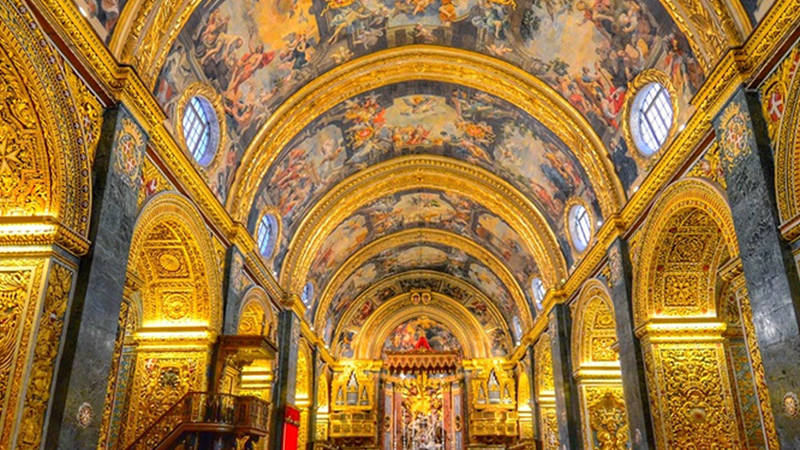
.04
St. John's Co-Cathedral
St. John’s Co-Cathedral is unparalleled in its historic significance to Malta. Apart from its place among the most magnificent baroque churches in the world, St. John’s Co-Cathedral is also an architectural metaphor for the Order of the Knights of St. John, who built it between 1573 and 1578. The simple façade reflects the Knights’ military pragmatism, while the gilded vaults, painted ceilings, marble floors and general baroque exuberance of its lavish interior, reveal the sophistication, power and wealth of the Order. It was raised to a status equal to that of St Paul’s Cathedral in Mdina, the official seat of the Archbishop of Malta, by a papal decree of 1816, hence the term ‘co-cathedral’.
.06
Hagar Qim Temples
UNESCO world heritage listed Haġar Qim is a marvel of ancient history and engineering located along the strikingly stark landscape of the south-east coastline. Built on a high hill overlooking the blue Mediterranean and the islet of Fifla, Hagar Qim and its sister temple Mnajdra (500m down the hill and closer to the sea), have the most spectacular location of any temples on the islands. They were constructed during what is known as the Ggantija temple phase, which include not only the oldest temples in Malta, but also the oldest free standing, man-made, structures in the world. The temples hold mysteries that are 5,500 years old.
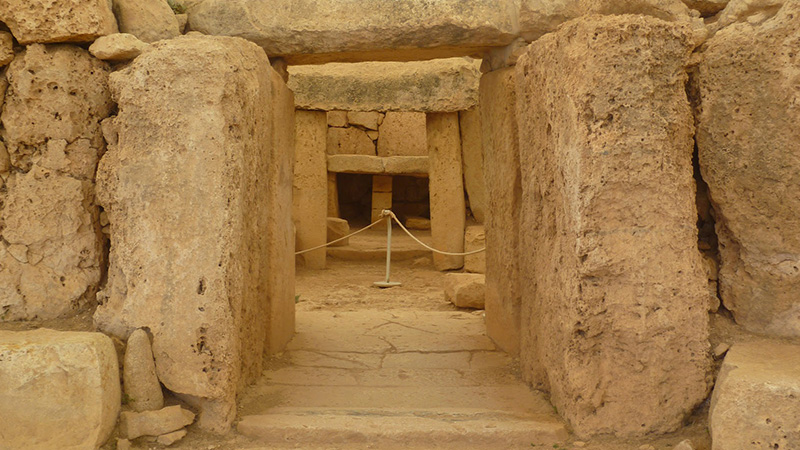
.06
Hagar Qim Temples
UNESCO world heritage listed Haġar Qim is a marvel of ancient history and engineering located along the strikingly stark landscape of the south-east coastline. Built on a high hill overlooking the blue Mediterranean and the islet of Fifla, Hagar Qim and its sister temple Mnajdra (500m down the hill and closer to the sea), have the most spectacular location of any temples on the islands. They were constructed during what is known as the Ggantija temple phase, which include not only the oldest temples in Malta, but also the oldest free standing, man-made, structures in the world. The temples hold mysteries that are 5,500 years old.
.07
Mnajdra Temples
Like the Hagar Qim temples, the temples of Mnajdra are located on the south eastern coast of Malta in a stunning setting. Dated within the same period as the Hagar Qim temples, Mnajdra consists of three separate temples facing a common oval forecourt. The first and oldest structure dates to the Ġgantija phase (3600 – 3200 BC). The second structure to be built was the South Temple, constructed in the early Tarxien phase (3150 – 2500 BC). The Central Temple, between the other two, was the last to be built. The most impressive of the Mnajdra temples is the lower (southern/western) temple, with a largely intact façade and bench constructed sometime between 3150 and 2500 BC.
.07
Mnajdra Temples
Like the Hagar Qim temples, the temples of Mnajdra are located on the south eastern coast of Malta in a stunning setting. Dated within the same period as the Hagar Qim temples, Mnajdra consists of three separate temples facing a common oval forecourt. The first and oldest structure dates to the Ġgantija phase (3600 – 3200 BC). The second structure to be built was the South Temple, constructed in the early Tarxien phase (3150 – 2500 BC). The Central Temple, between the other two, was the last to be built. The most impressive of the Mnajdra temples is the lower (southern/western) temple, with a largely intact façade and bench constructed sometime between 3150 and 2500 BC.
.08
Hal Saflieni Hypogeum
The Hypogeum is Malta’s unique underground temple complex, discovered by chance in 1902 when builders were preparing a building site in Paola. Covering some 500 sq metres it comprises a labyrinth of halls, corridors and chambers on three levels cut from the limestone around 4,000 to 5,000 years ago. This was a place of both ancient worship and burial and at the lowest level of the complex a chamber was found containing the remains of around 7,000 bodies. One chamber, known as the Oracle Chamber, allows a strange phenomenon – it will magnify male voices around the complex but not female voices.
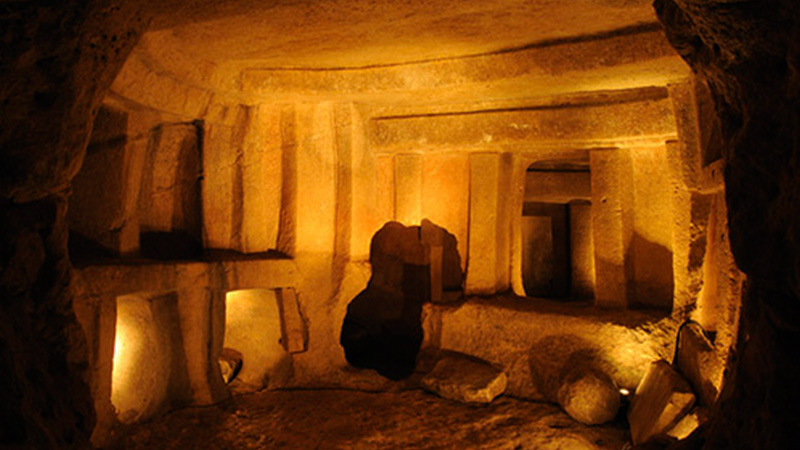
.08
Hal Saflieni Hypogeum
The Hypogeum is Malta’s unique underground temple complex, discovered by chance in 1902 when builders were preparing a building site in Paola. Covering some 500 sq metres it comprises a labyrinth of halls, corridors and chambers on three levels cut from the limestone around 4,000 to 5,000 years ago. This was a place of both ancient worship and burial and at the lowest level of the complex a chamber was found containing the remains of around 7,000 bodies. One chamber, known as the Oracle Chamber, allows a strange phenomenon – it will magnify male voices around the complex but not female voices.
.09
San Anton Gardens
The lovely walled gardens of San Anton adjoin the San Anton Palace, which is the official residence of the President of Malta. The tranquility of these gardens is remarkable, truly offering an oasis away from the bustle of daily life. They are botanic garden having trees from every continent and having many features dating back to the gardens establishment in the 17th century. There are several pleasant water features including a duck and swan pond near the centre of the garden, which also contains many turtles and fish making it a favourite for families with children and another smaller pond holding black swans.
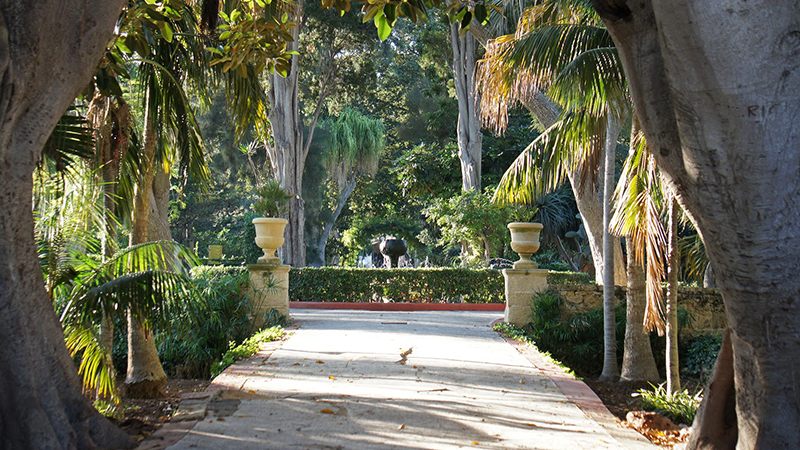
.09
San Anton Gardens
The lovely walled gardens of San Anton adjoin the San Anton Palace, which is the official residence of the President of Malta. The tranquility of these gardens is remarkable, truly offering an oasis away from the bustle of daily life. They are botanic garden having trees from every continent and having many features dating back to the gardens establishment in the 17th century. There are several pleasant water features including a duck and swan pond near the centre of the garden, which also contains many turtles and fish making it a favourite for families with children and another smaller pond holding black swans.
.10
Mosta Parish Church
Mosta, a village in Malta’s north, has much to offer but it is most famous for its impressive church or, more specifically, for its rotunda which is the third largest unsupported dome in the world. Mosta celebrates the feast of the Assumption every August 15th, perhaps the most popular feast in Malta, with great pomp and eye-popping fireworks display. The Mosta Dome church was built in 1860 and it is dedicated to the Assumption of Our Lady. During the Second World War the church was almost destroyed when, during an air raid, a 200kg bomb fell through the dome without exploding. All the 300-people attending morning mass were left unharmed.
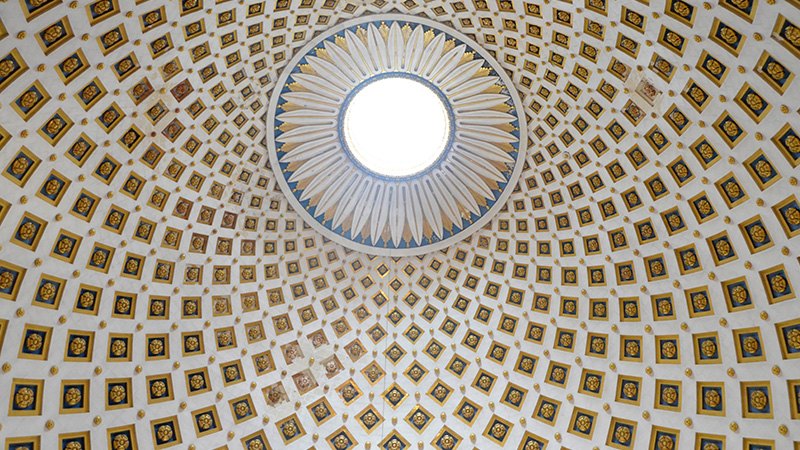
.10
Mosta Parish Church
Mosta, a village in Malta’s north, has much to offer but it is most famous for its impressive church or, more specifically, for its rotunda which is the third largest unsupported dome in the world. Mosta celebrates the feast of the Assumption every August 15th, perhaps the most popular feast in Malta, with great pomp and eye-popping fireworks display. The Mosta Dome church was built in 1860 and it is dedicated to the Assumption of Our Lady. During the Second World War the church was almost destroyed when, during an air raid, a 200kg bomb fell through the dome without exploding. All the 300-people attending morning mass were left unharmed.